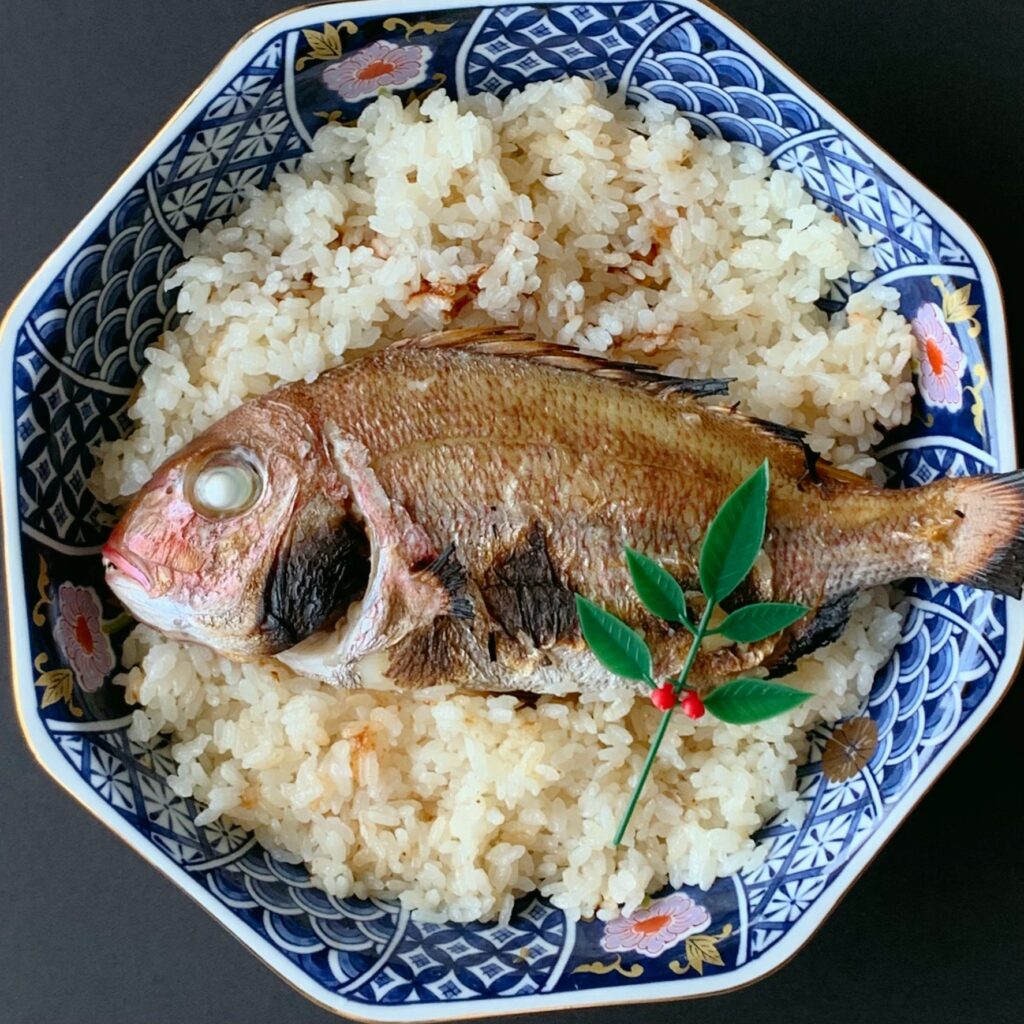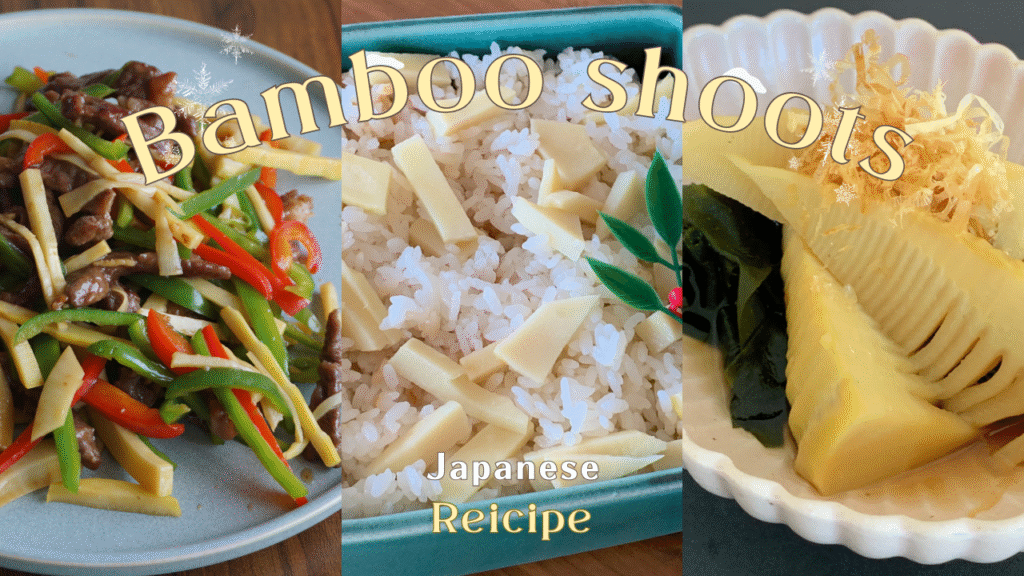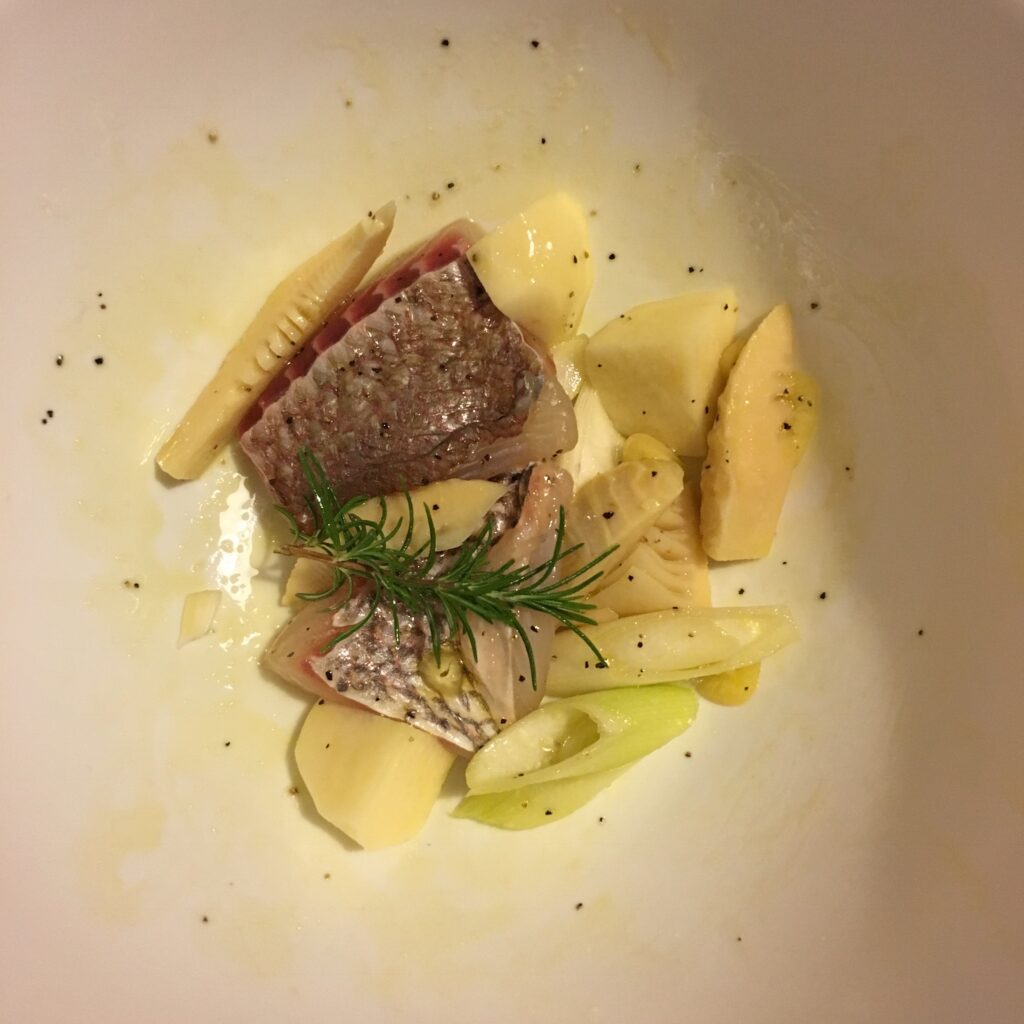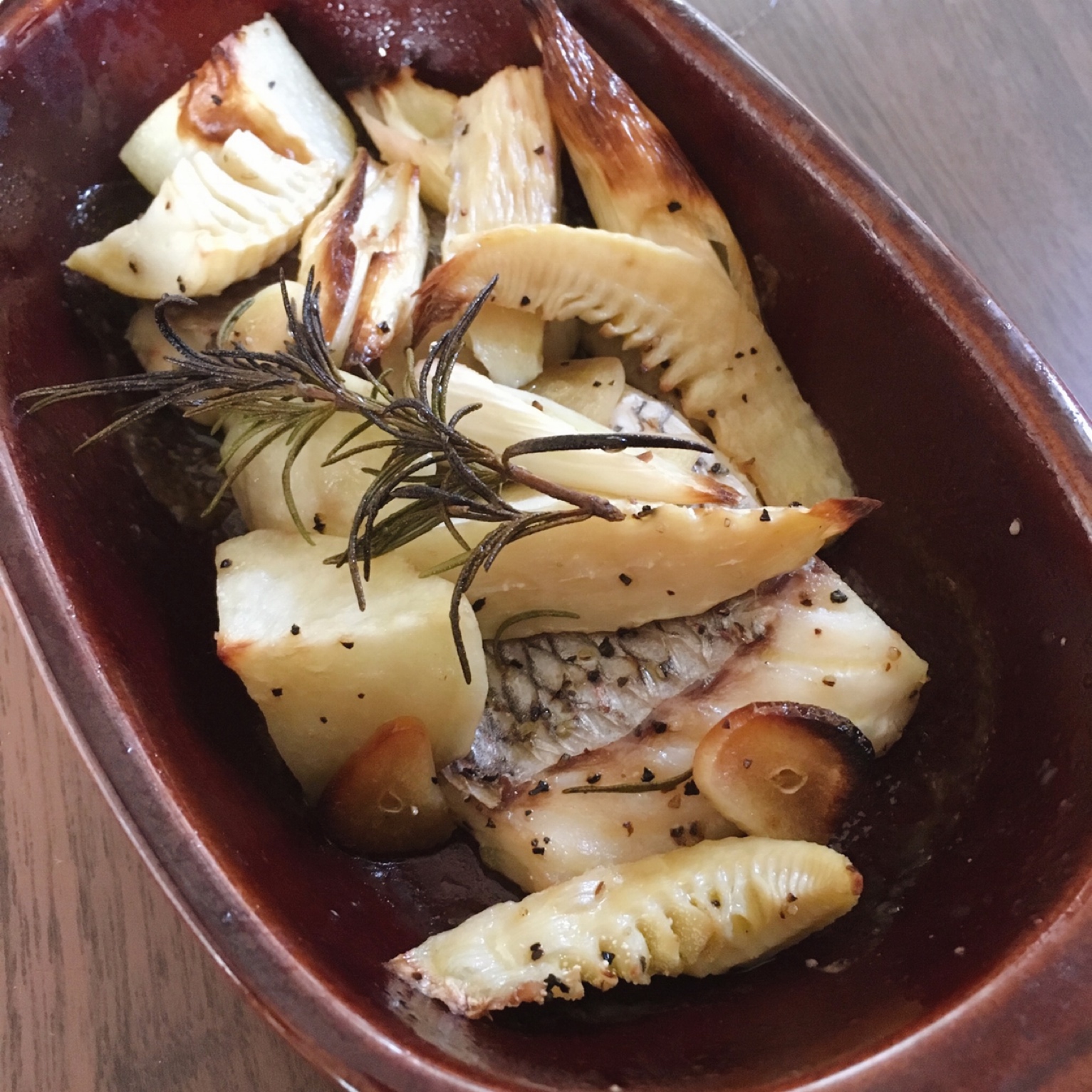
Tai to takenoko no oven yaki(鯛とタケノコのオーブン焼き)
What kind of dish is tai to takenoko no oven yaki??
tai = sea bream takenoko = bamboo shoots Japanese leek = shiro negi
Sea bream and vegetables such as bamboo shoots and potatoes are marinated in olive oil and baked in the oven.
The oil, which is marinated with rosemary, gives off a wonderful aroma. You can also add sage or thyme as herbs.
White fish tends to dry out easily, but soaking it in oil before baking can prevent this.
If you can make effective use of your oven, you can cook multiple dishes at the same time smoothly.
Cut potatoes and other vegetables into pieces about 5 cm cubes. If you’re worried about whether they’ll be cooked through, it’s a good idea to heat them a little in the microwave beforehand.

INGREDIENTS for Oven-roasted sea bream and bamboo shoots flavored with herbs (2SERVINGS)
- ☆Madai (Sea bream) 2 Slices (100g)
- ☆Salt 1g
- Bamboo shoots 40g
- Japanese leek 20g
- Potato 30g
- Salt 1g
- Pepper appropriate amount
- Garlic 1piece8g
- Olive oil 6g
- Rosemary appropriate amount
- Soy sauce 5g

You can use either fresh bamboo shoots or commercially available boiled bamboo shoots. Tomatoes, green beans, asparagus, and peppers are other recommended ingredients.
Oven-roasted sea bream and bamboo shoots flavored with herbs COOKING INSTRUCTIONS
- Rub salt onto the sea bream and wait 10 minutes.
- Cut the bamboo shoots, Japanese leek, and potatoes into 5cm cubes.
- Mix bamboo shoots, Japanese leek, potatoes, salt, pepper, garlic, olive oil, rosemary, and sea bream and wait 20 minutes.
- Place the ingredients in a heat-resistant dish and bake at 230℃ for 30 minutes. (There is no need to preheat. If you’ve preheated the oven, reduce the baking time to about 15 minutes. )
- Once baked, sprinkle with soy sauce.





コメント